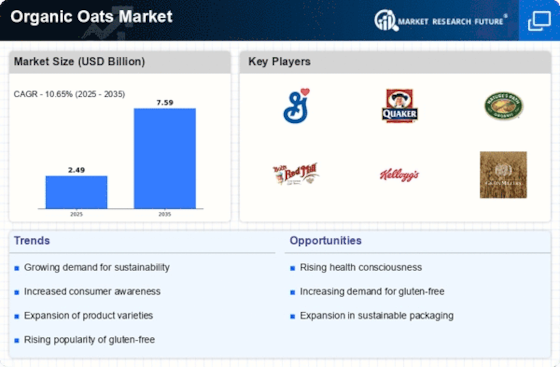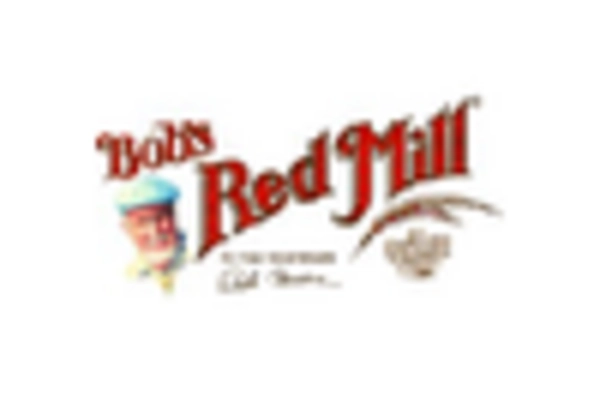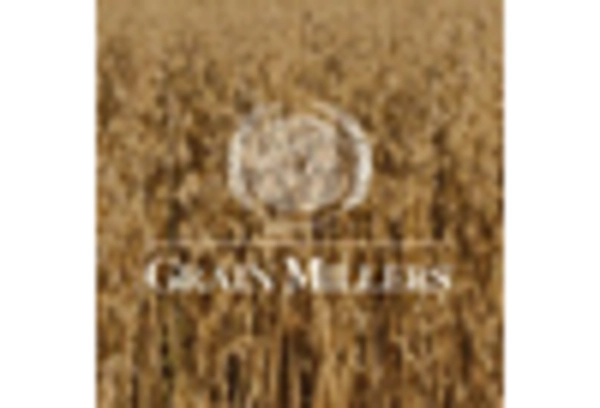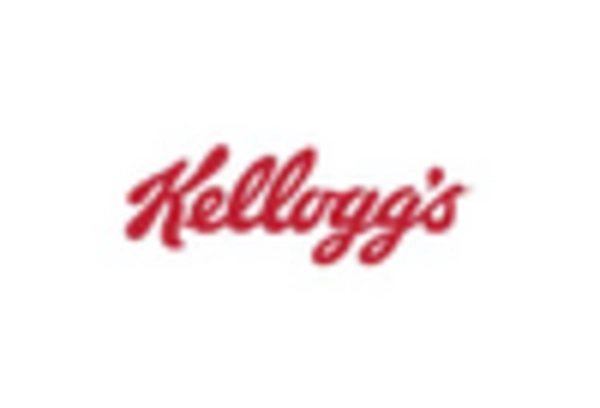Innovative Product Offerings
The Organic Oats Market is witnessing a wave of innovative product offerings that cater to diverse consumer preferences. Manufacturers are increasingly developing new oat-based products, such as oat milk, granola bars, and instant oatmeal, which appeal to health-conscious consumers. This trend is supported by market data indicating that the oat milk segment has grown significantly, with sales projected to reach several billion dollars in the near future. Such innovations not only enhance the appeal of organic oats but also expand their market reach. As companies continue to introduce creative and convenient oat products, the Organic Oats Market is poised for further growth.
Rising Demand for Healthy Foods
The Organic Oats Market is experiencing a notable increase in demand for healthy food options. Consumers are increasingly prioritizing nutrition and wellness, leading to a shift towards organic products. According to recent data, the organic food sector has seen a compound annual growth rate of approximately 10 percent, with oats being a significant contributor. This trend is driven by a growing awareness of the health benefits associated with organic oats, such as their high fiber content and potential to lower cholesterol levels. As more individuals seek to improve their diets, the Organic Oats Market is likely to benefit from this heightened focus on health and wellness.
Health Benefits and Nutritional Awareness
The Organic Oats Market is significantly driven by the growing awareness of the health benefits associated with oats. Research indicates that oats are rich in essential nutrients, including vitamins, minerals, and antioxidants, which contribute to overall health. The increasing prevalence of health-related issues, such as obesity and heart disease, has prompted consumers to seek out nutritious food options. As a result, the demand for organic oats, known for their health-promoting properties, is on the rise. This heightened nutritional awareness is expected to continue influencing consumer purchasing decisions, thereby propelling the Organic Oats Market forward.
Sustainability and Environmental Concerns
The Organic Oats Market is significantly influenced by rising concerns regarding sustainability and environmental impact. Consumers are increasingly aware of the ecological footprint of their food choices, leading to a preference for organic products that are perceived as more environmentally friendly. The organic farming practices associated with oats often result in reduced pesticide use and improved soil health. This shift towards sustainable agriculture is reflected in market data, which indicates that organic oats sales have surged as consumers seek to support eco-conscious brands. The emphasis on sustainability is expected to continue shaping the Organic Oats Market in the coming years.
Increased Availability of Organic Products
The Organic Oats Market is benefiting from the increased availability of organic products in retail and online channels. As consumer demand for organic oats rises, retailers are expanding their offerings to include a wider range of organic options. This trend is evident in the growing number of supermarkets and specialty stores that now feature dedicated organic sections. Additionally, e-commerce platforms are making it easier for consumers to access organic oats, further driving market growth. The enhanced availability of organic products is likely to attract new customers and encourage existing consumers to incorporate organic oats into their diets more frequently.

















Leave a Comment